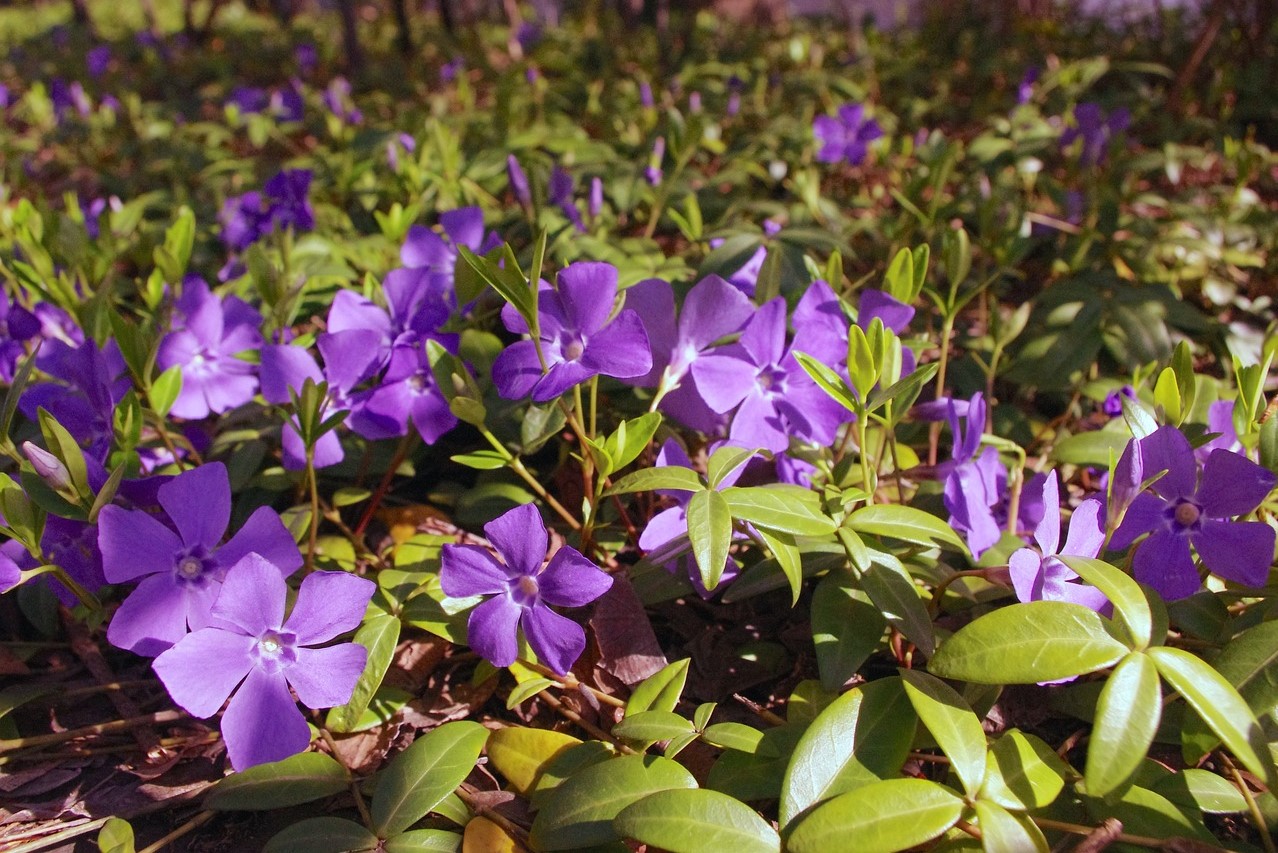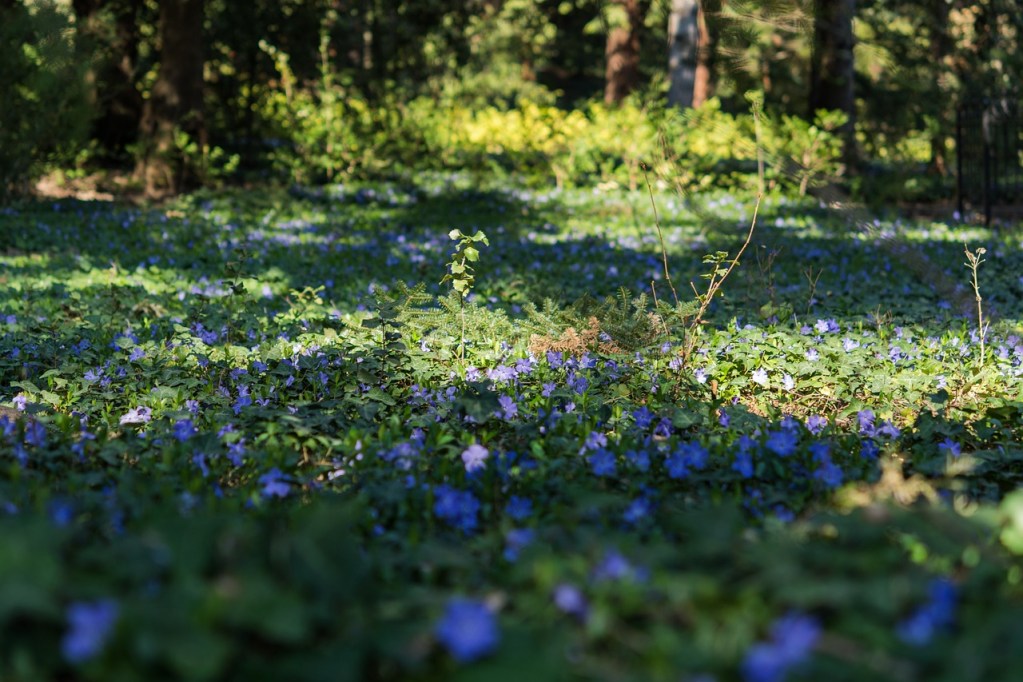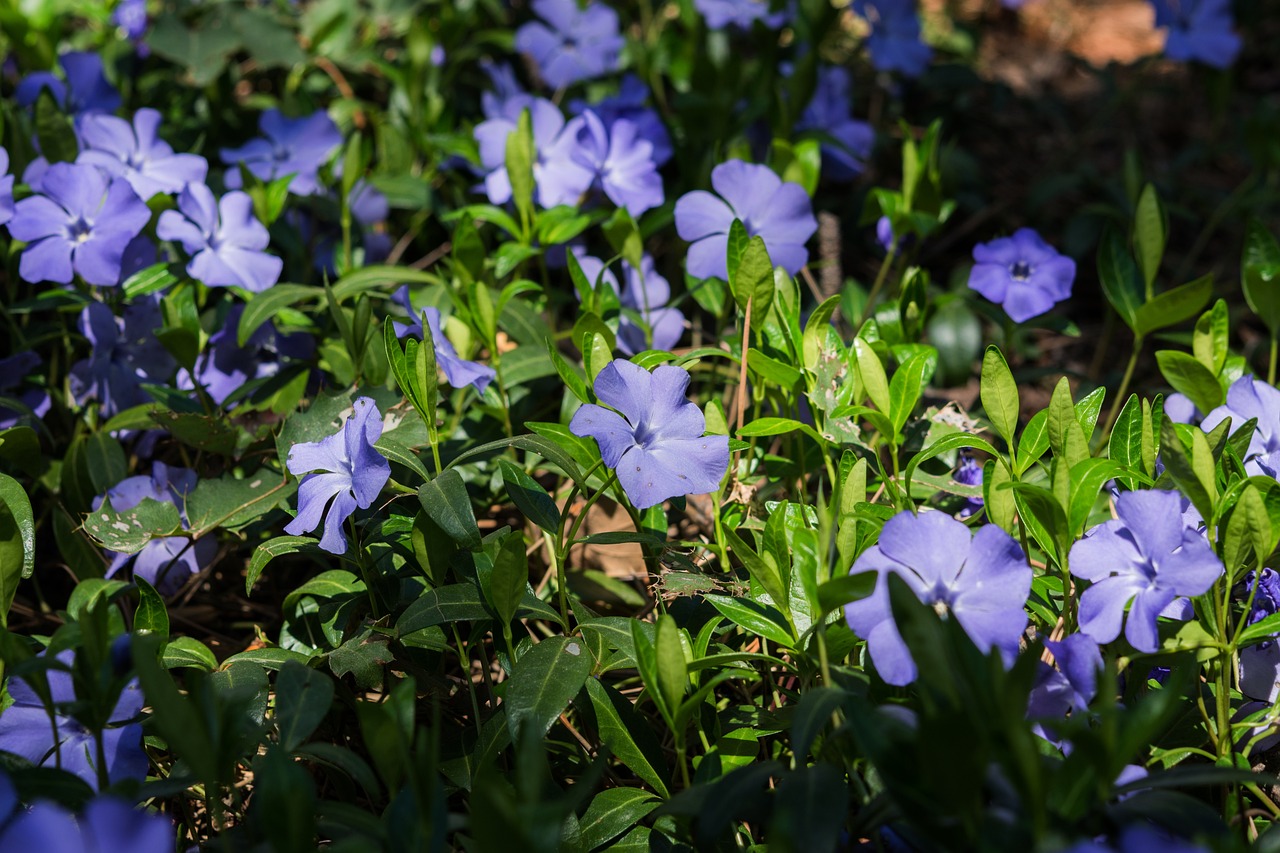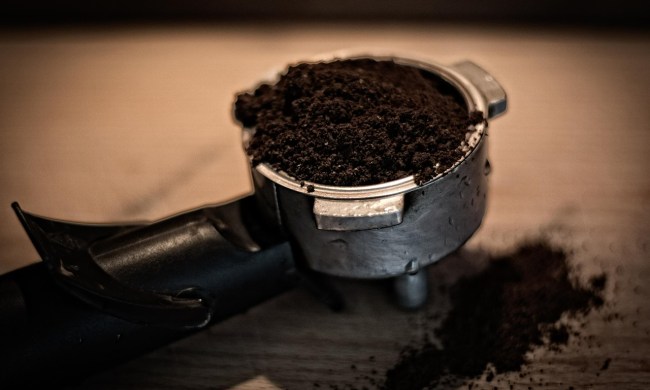
People are starting to look for alternatives to grass lawns, whether it’s because they’re easier to maintain, better for the environment, or just more attractive. From Irish moss lawns to creeping thyme, there are plenty of interesting plants you can grow as a ground cover. One popular grass alternative is Vinca minor, also known as common periwinkle. However, is this plant the best choice for your lawn? Here’s everything you need to know to make your decision!
Pros of Vinca minor
Vinca minor provides several benefits as a ground cover. It’s low maintenance and tolerates drought, sun, and shade. This is also a low-growing plant, which means you don’t need to worry about mowing it to keep the height down. It also grows quickly and vigorously, spreading to fill your entire lawn. It will spread to fill in empty patches, helping repair damaged sections and letting you save on seeds.
Its vigorous growth also gives your lawn a thick, lush appearance. This, coupled with the sleek, dark green leaves and beautiful blue or purple flowers, makes it particularly attractive as a ground cover. During mid to late spring, it produces so many flowers your lawn may look more blue than green! It will occasionally bloom again during summer and fall, although these are usually smaller.

Cons of using Vinca minor
For all the benefits it provides, Vinca minor isn’t perfect. The same vigorous growth that makes it a luscious lawn also makes it difficult to control. It has a tendency to spread into gardens, neighbors’ yards, or any other nearby spaces. Unfortunately, Vinca minor is also not native to the U.S. It is native to Europe, and its spreading habit and quick growth rate mean it outcompetes native plants. It is invasive; particularly in warmer regions. Although it is less invasive in colder regions where low temperatures may stunt its growth, this also prevents it from growing quite as densely.
Vinca minor does have some problems with common garden pests and fungal infections. The most common pests that bother Vinca minor are soft-bodied insects like aphids, whiteflies, and spider mites. You can control these with insecticidal soap.

Alternatives to Vinca minor
If you want a beautiful, flowering ground cover that isn’t invasive, there are a few options you can choose from. Wild blue phlox is the most similar visually, while sedum resembles a succulent. Turkey tangle frogfruit is a good option if you live in the Southwest and need a ground cover that’s tolerant of heat and drought.
Now you know the pros and cons of using Vinca minor as a ground cover and can decide for yourself if it’s right for you. Vinca minor makes for a lush, beautiful lawn, but it can also spread out of control. Luckily, there are some native alternatives you can grow if you prefer.



